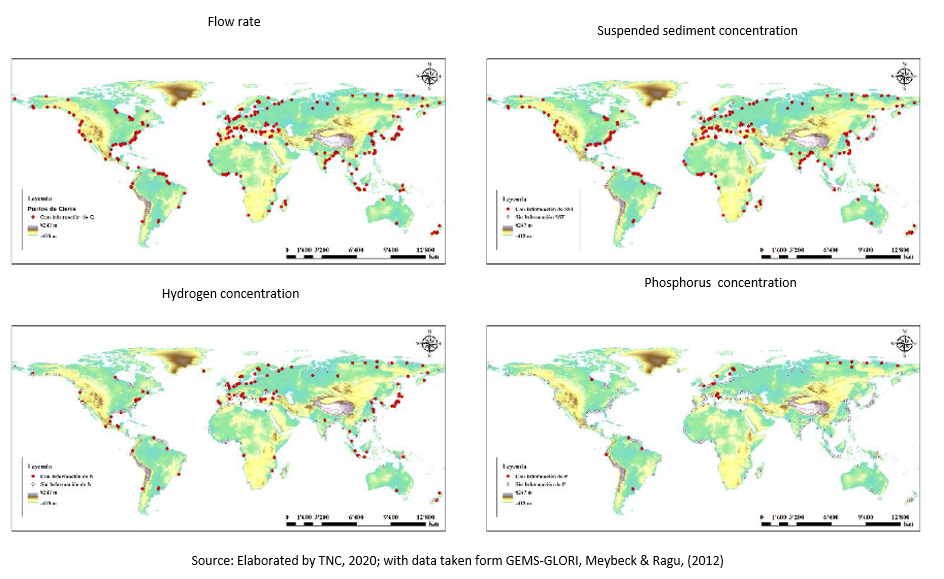Parametric Coherence Analysis for InVEST Model:
WaterProof makes use of the flow, sediment, phosphorus and nitrogen information consolidated in the GEMS-GLORI database, which is based on the works of Meybeck & Ragu, (2012).
In the GEMS-GLORI database, a total of 923 monitoring points were found around the world. In total, 244 points were filtered for flow, 205 points for suspended sediment concentration, 111 for nitrogen concentration and 26 for phosphorous concentrations.

With the help of the digital hydro-shed elevation model, the definition of the watersheds with closure points recorded by the GEMS-GLORI database was carried out (Meybeck & Ragu, 2012). The accumulation threshold used for the definition is the same as that used for the evaluation of the models (20 accumulation cells). The number of regions per model in which the coherence analysis could be performed is listed below.
- SWY 56/56 regions
- AWY 44/56 regions
- SDR 41/56 regions
- NDR-N 39/56 regions
- NDR-P 12/56 reg regions ions
Given that the monitoring points of the GEMS-GLORI database do not have a presence in all the 56 regions in which the planet earth was segmented for the purposes of WaterProof, it was necessary to carry out a process of parametric regionalization. For this, the K-means algorithm was used, which uses groups of closest mean values (K-means) and the choice of a random center with a specific probability. The points (initial centroids) are obtained using a specific probability that minimizes the inertia squared (Manochandar et al., 2020). The basic principle of the K-means formulation is to divide a sample of “η” observations into “k” cluster with the highest possible homogeneity, for this the K-means algorithm aims to choose the centroids that minimize the inertia squared.
Bibliography
What is InVEST?. 2020. NATURAL CAPITAL PROJECT. | https://naturalcapitalproject.stanford.edu/software/invest
Análisis de coherencia paramétrica para modelos InVEST. 2020. JNogales. TNC. | https://tnc.app.box.com/s/5hfqohb4ktwvx66qh5wxyicrm227di46
Referencies
Por qué necesitamos herramientas para mapear y evaluar los servicios ecosistémicos | https://naturalcapitalproject.stanford.edu/sites/g/files/sbiybj9321/f/invest_version_en_espanol_oct_2019.pdf